Camping cots, air mattresses, and sleeping pads…… So many options. But which one is right for YOU? I’ve asked this question myself many times.
While there isn’t a clear-cut answer, here are some general guidelines:
- Go with sleeping pads if you want something lightweight and compact, versatile for different types of camping, and provides good insulation
- Go with air mattresses if you really value bed-like comfort and don’t mind more complicated setups or risks of leaking
- Go with camping cots if you want more distance from the ground or more storage space; car camping only
- Combine sleeping pads with cots or air mattresses for the best comfort and insulation
After trying all three options in a few years of camping and doing hours of research online, I’ve put together a detailed side-by-side comparison. Now let’s get into more details and nuances. Feel free to use the menu below for navigation:
What are They?
Before jumping to the comparison, it’s helpful to have some basic understanding of each item.
Camping Cots
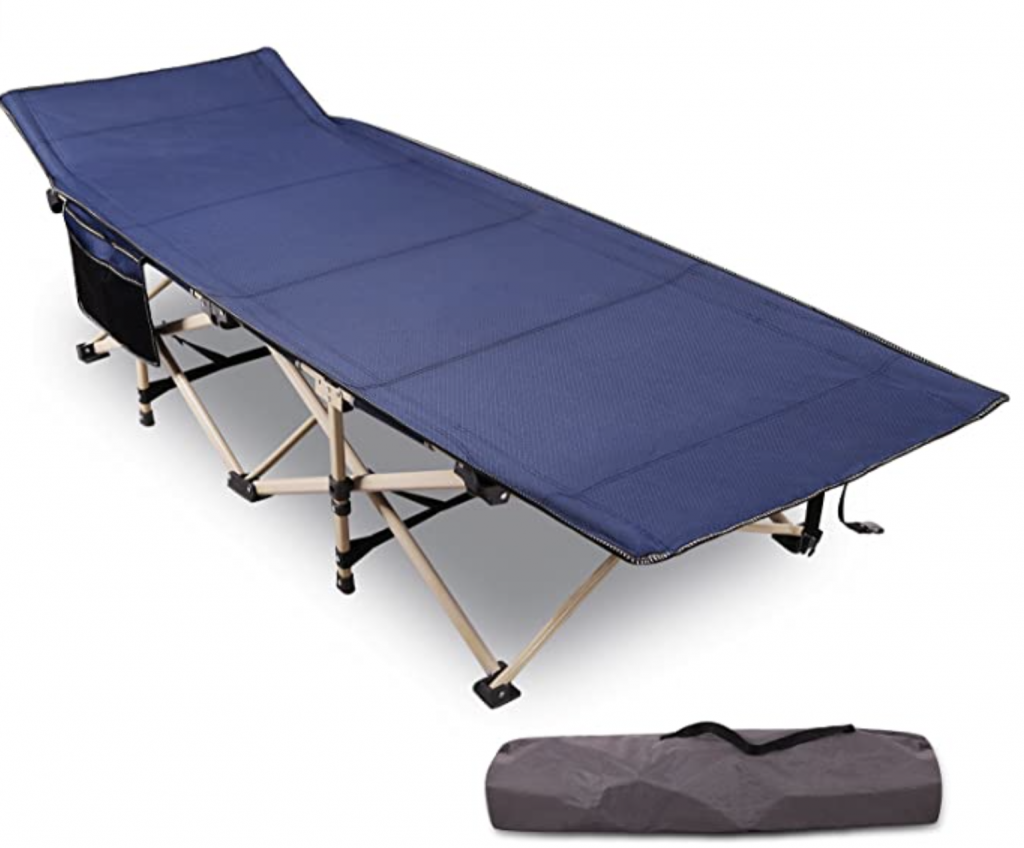
Also known as camping beds, cots are lightweight beds that can be easily transported. As shown, most of them are supported by an X-shaped metal or wooden frame, with a durable fabric on top that becomes taut when the bed is unfolded or assembled.
Among the 3 sleep systems, camping cots is the only one with elevation from the ground.
There are also tent cots that combine a tent with a cot. It can be great for reducing the amount of gear you need to pack.
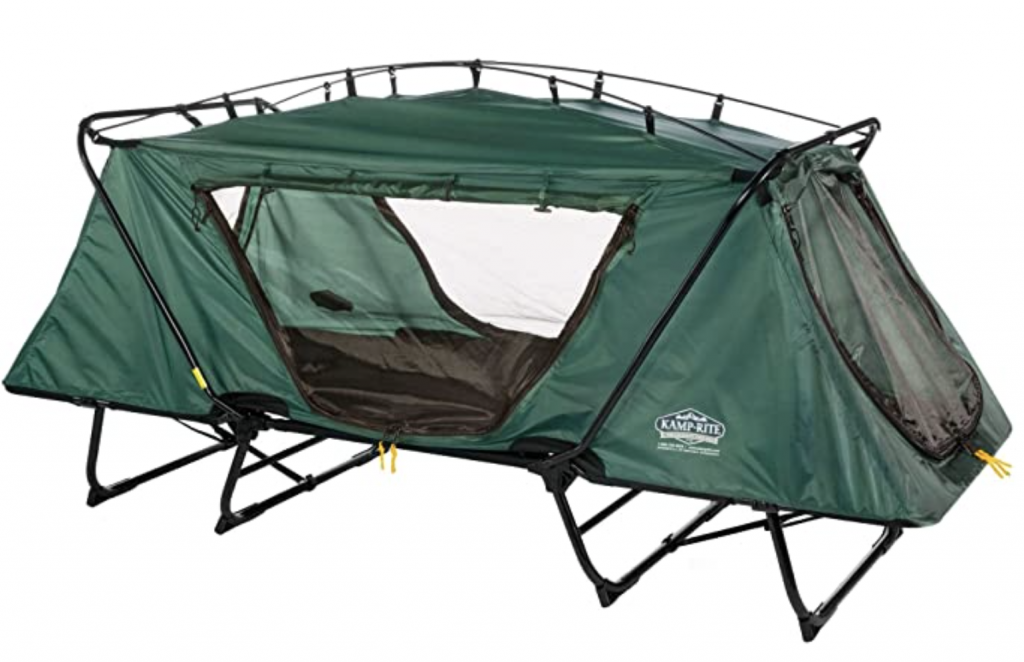
Pros:
- Elevation from the grounds makes it quite comfortable
- Durable
- Easy set up with foldable designs
- You can store your gear under the cot or in side pockets
Cons:
- Heavy and bulky, 99% can only be used for car camping
- Can take up a lot of space in your tent because it’s so high from the ground
- Less comfortable for side sleepers
- Limited two-person options
Air Mattress
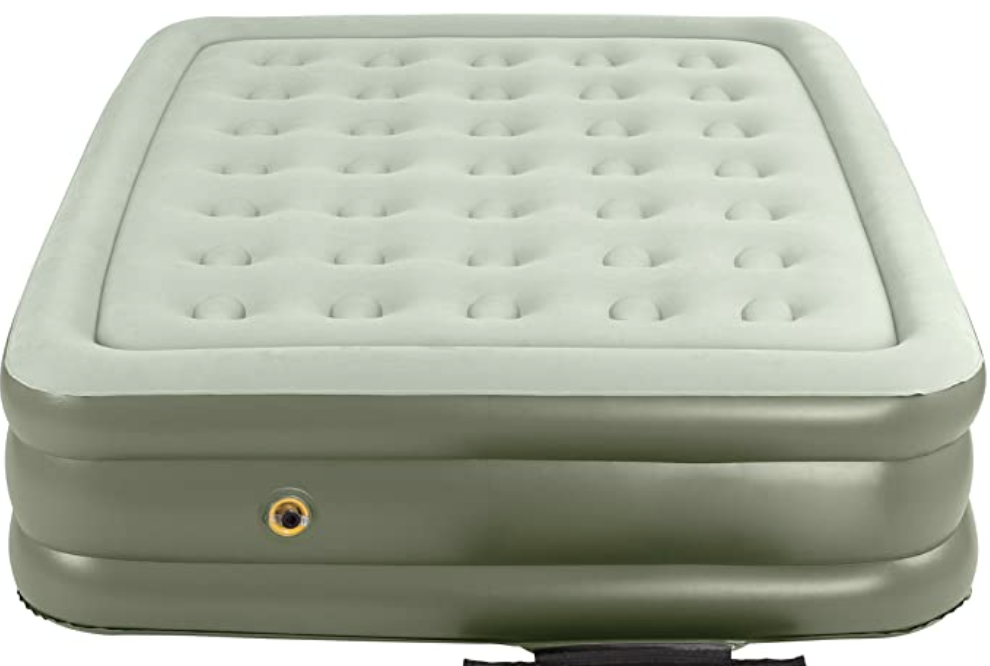
I must say there’s a blurry line between camping air mattresses and sleeping pads. Many sleeping pads are also air-filled. When we talk about air mattresses in this article, we will be referring to more traditional airbeds or blow-up beds inflatable with pumps.
Airbeds for everyday use are different from those suitable for camping. Many “bedroom airbeds” are 19 – 22 inches high and will probably take up too much space in a tent. Most of them also require access to electricity to inflate, which will limit your choices of campgrounds and campsites.
Pros:
- Can match the comfort of your bed at home
- Variety of sizes
- Much easier to store and transport than a cot
Cons:
- Can puncture or leak unexpectedly
- Firmness may change throughout the night
- Little to no insulation
- More complicated set up; need to bring pumps
- Thick mattresses will take up a lot of space in your tent
Sleeping Pad
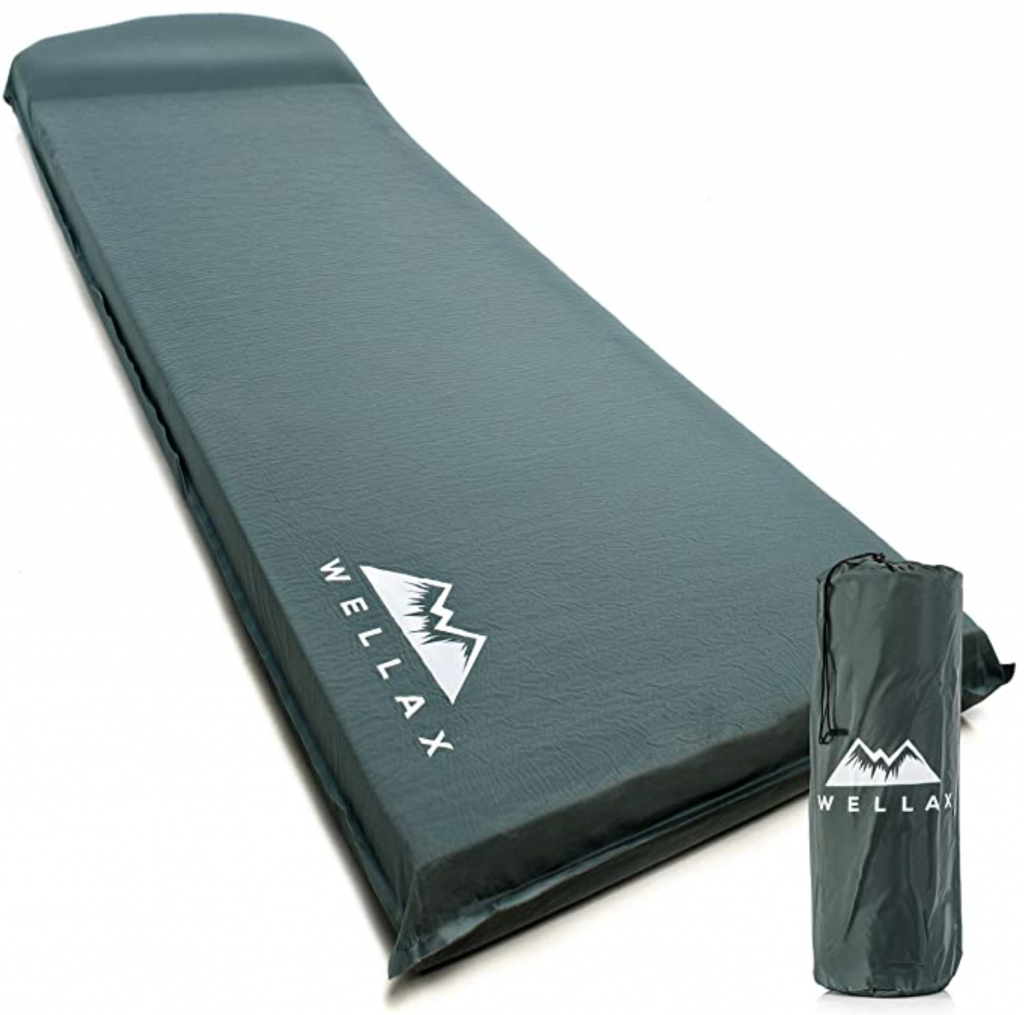
There are 3 types of sleeping pads: air pads, self-inflating pads, and (closed-cell) foam pads.
Air pads are similar to air mattresses, where you add and release air through a valve. But many air pads are lightweight with better insulation since they are specifically designed for camping.
Self-inflating pads are my favorite. Instead of being filled 100% by air, they contain open foam cells that will inflate naturally as you open the valve. No pumps needed. To deflate, simply open the valve to let air out as you roll it up.
“Closed-cell foam pad” sounds fancy, but it’s just a dense foam pad that offers cushions with no ability to inflate or deflate. It’s the most basic and inexpensive model.
Pros:
- Lightweight and compact
- Easy to set up
- Versatile for car camping and backpacking in different weather conditions
- Durable
- Great options for insulation
- Take up little space in tent
- Foam pads are inexpensive but quite reliable
Cons:
- Often less comfortable than cots or air beds due to being thinner and closer to the ground
- Limited two-person options
Side-by-side Comparisons
Comfort
Winners: Air mattress and camping cots
We all know how much a good night’s sleep matters when you want to enjoy a day filled with adventures. That’s why comfort is one of the most important factors for choosing your sleep system. In this section, we will focus on comfort factors unrelated to weather conditions. The topic of insulation warrants a section in and out of itself.
Sleeping pads are generally less comfortable than camping cots and air mattresses. But there are exceptions, and comfort is subjective.
Cots
Its elevation from the ground offers several benefits in terms of comfort:
- You can sit up like you would on your bed. This will put less strain on your back and muscles when you try to get up.
- You won’t feel uneven surfaces or those unwanted creatures crawling at the bottom of your tent
- You won’t get wet if rainwater pools under your tent. You can use a footprint or tarp to waterproof the bottom of your tent as much as possible, but nothing guarantees dryness like being off the ground.
Camping cots are often made to be wider than sleeping pads. The average sleeping pad is about 20 inches wide, whereas a regular-sized cot would be 28 – 30 inches wide. I’m personally much happier with actual space to toss and turn.
But a cot is less comfortable for a side sleeper. The taut surface won’t distribute pressure evenly, so don’t be surprised if you wake up with sore shoulders in the morning. A simple solution is to put a sleeping pad or air mattress on top of the cot for more cushioning. And bring a pillow if you’re used to it. Some models even come with an adjustable headrest as a substitute for pillows.
Air mattress
They stay true to the phrase “comfortable as a bed” until they start leaking. Let me explain.
With abundant queen-size and twin-size options, air mattresses offer larger sleeping surfaces than camping cots. Some mattresses are thick enough (15 inch +) for you to sit up like you would on your bed.
And you can adjust the firmness by letting in more or less air. The added cushion makes them ideal for side sleepers and are found to reduce back pain.
BUT all this comes with one caveat: It may sag or deflate throughout the night. At best you end up with a sore back and at worst you find yourself sleeping on the ground.
Air mattresses lose pressure as the temperature drops at night even with no holes or punctures. So you’ll get a softer bed than you signed up for, which can kill your back. A solution is to inflate your bed to be a little firmer than you’d like, though it takes practice to get it exactly right. Some air mattresses also come with built-in coil systems that improve support and avoid sagging.
Air mattresses are also prone to leakage. The risk is even higher during camping due to uneven tent floors and improper handling. To deal with this, bring a repair kit (or duct tape) so that you can patch the hole as soon as you notice it. And as you shop for air mattresses, pay close attention to the quality of the valve and welding around the seams.
Sleeping pad
Sleeping pads are usually far less comfortable than a proper air mattress or a camping cot. They can be pretty thin and many times I can feel the features of the ground beneath me despite the cushioning. Not a fun experience.
And many are made to be “just long enough” or “just wide enough”. The average width of 20 inches is barely enough for anyone to change sleeping positions. One stretch and you touch the tent floor. And with most being 6 feet long, tall people will need to shop around.
Insulation / Weather Performance
Winner: Sleeping pads
You want just the right amount of warmth when sleeping, and that’s where the insulation of your sleeping system comes into play.
Sleeping pads have the best insulation out of the trio. They come in such variety that there’s a pad for every weather. The R-value measures a pad’s “capacity to resist heat flow through it”. A higher R-value means it will better insulate you from cold surfaces. A minimally insulated sleeping pad (R-value <2) will suffice for summer camping, whereas for winter camping you’ll want one with R-value > 5.
Cots
On hot summer nights, airflow around the cot is great for heat loss and will keep you cool.
But you might have read conflicting information about how warm a cot is in winter. The bottom line is, bring an insulating sleeping pad (maybe also wool blankets) when you camp with your cot in colder weather. But you’ll need a thinner pad than you would if you were sleeping on the ground. Here’s why:
A cot is naturally “warmer” than a sleeping pad as you no longer lose body heat to the ground. According to this engineering site, soil has much higher thermal conductivity than air, so you can lose up to 50 times more body heat to the ground than to the air around you. And if the ground is wet….. you can see how much worse it could be. I also found this to be true based on personal experiences.
But beyond elevation from the ground, a cot doesn’t offer any other forms of insulation, and the space around it invites cold draft underneath you. So you’ll need additional insulation from sleeping pads. And since you are losing less heat to the ground, a thinner pad with a lower R-value would do the job.
Air mattresses are poor insulators, period. It gets the worst of both worlds: closer to the ground than a cot, but filled with air rather than insulating materials used in sleeping pads. In the summer it actually helps you stay cool. But I once camped in early spring and my Coleman air mattress was barely warmer than the ground itself. One solution to this is to have a sleeping pad or wool blankets on top of your mattress. Yep back to sleeping pads again.
Durability
Winner: Camping cots
Made with aluminum frames and rugged fabrics, the camping cot is the most durable among the three. After all, it was first used by the army. Steel frames are also available for extra durability and sturdiness.
Sleeping pads would be a close second in terms of durability. They are built to withstand the natural elements and sometimes rugged surfaces. Foam pads are the most long-lasting because there’s no risk of deflation from puncture or tears as there is for air pads.
And air mattresses come in at a distant third. The worst part is that a puncture or leakage usually happens when you least expect it. Mine deflated one night after I’ve used it for a year, just when I started to trust it and believed I haven’t used it long enough for it to break. Oh well, things happen.
There are things you can do to minimize the risk, though. I know it’s tempting to simply drag your air mattress through the dirt back to your campsite after inflating it near an electrical outlet. Do not do this. Have someone else carry it back with you.
And keep your air mattress, pumps, and blankets in one plastic bin. This will prevent wear and tear to the mattress during transport.
Again, bring a repair kit.
Ease of Storage and Transport
Winner: sleeping pad
While car campers may not give a second thought to the size and weight of their sleeping system, it’s one of the most important factors for backpackers. When you have to hike for hours with all your gear, you will, and should, take every opportunity to shed a few pounds.
The sleeping pad is the winner by a long shot here. Thanks to their inflatable features, some ultra-light options for summer camping packs down to only 3 in x 7 in, weighing in around half a pound. Even the well-insulated options (R-value >5) can be only 4 in x 9 in, weighing in around a pound. And we are talking about sleeping pads 2 – 3 inches thick that you would actually want to sleep on, not those 1/2-inch foam strips. Foam pads are usually the bulkiest because you couldn’t deflate them.
Compared to sleeping pads, air mattresses are a step up in size and weight, though they are still quite portable. An average twin-sized air mattress weighs around 5 – 7 pounds, while a queen-sized one weighs 7 – 9 pounds. The typical packed size is around 0.3 – 0.6 cubic feet. But keep in mind that the pump and repair kit will take up extra space.
Now comes the cot which is the bulkiest option. A standard camp cot (around 70 inches long and 30 inches wide) weighs around 15lbs, with packaging dimensions around 40 in x 10 in x 7 in. They fit in most cars. Outside of this average, cots can weigh as little as 2.8lbs or 42lbs for a double cot with air mattress. Keep in mind the “ultra-light” ones are usually closer to the ground (6 – 8 inches), so you’ll lose out on some comfort features that come with a higher cot.
Ease of Setup
Winner: sleeping pad
You’ve hauled your gear to the campsite. Now you have to set it up.
Sleeping pads will be the most hassle-free. Simply unfold and lay it out on your tent floor if you have a foam pad. There’s only one more step for self-inflatable pads – open the valve then wait a few minutes. Air pads are the most challenging here since you may need a pump. But it shouldn’t take long to fill them up since most are pretty thin and low to the ground.
For camping cots with a foldable design, just unfold, lock, and you are set. Others require some assembly, but most are pretty simple. A minor inconvenience is that near the bottom of the cot, the feet can be quite sharp. As a result, placing the cot or moving it around in your tent can cause some damage. So you might want to place some wood planks, tarp, foam tiles, or outdoor carpet between the feet and tent floor for extra protection.
Air mattresses come in at a distant third again. It takes me and my friends around 20 – 30 minutes to inflate a queen-size mattress with hand or foot pumps. Not to mention that it’s a workout when you just want to sleep.
Inflating with electric or built-in pump is not that much easier either. You may have to take your mattress to an electrical outlet, inflate it, and carry it back. And if you can’t get your inflated mattress into your tent, be ready to take your tent to the electrical outlet. Or you can get an extension cord from the outlet to your tent.
Other options include using battery-powered air pumps or powering pumps with your car. Read carefully the instructions and battery capacity if you decide to go this route.
But regardless of how you inflate your air mattress, you can see it definitely requires more work and planning than cots or sleeping pads.
Space Required in Tent
Winner: sleeping pad
It’s no surprise that sleeping pads take up the least amount of space in your tent. They are thin and low to the ground with small surface areas.
Between cots and air mattresses, height will be an important factor since most tents do not have straight walls. I used to own a six-person tent. It could fit two queen-size, 4-inch thick air mattresses side-by-side but only two twin-sized cots. So think about how much “white space” you will have in your tent when deciding between a cot and an air mattress.
But cots can make up for the need for more vertical space by offering more storage underneath as well as storage pockets. This gives it an edge over air mattresses.
Variety of Sizes
Winner: air mattress
Air mattresses offer the most variety in sizes. You can easily find queen-sized ones. This is very convenient if you are going camping with your families.
By contrast, most camping cots and sleeping pads are for one person only. Yes, double cots and two-person sleeping pads do exist, but you’ll need to shop around. And your options for height, comfort, and insulation are more limited.
Affordability / Price
Winner: sleeping pad
I put this one last because I think it’s important to understand the tradeoffs of each option before setting a budget. And it’s hard to pick a winner here since there are such wide price ranges.
Camping cot:
- An average single-person cot around 20 inches high: $50 – $80
- Longer or heavy-duty single-person cot: $80 — $150
- Double camping cots: $150 – $300
Sleeping pad:
- Closed-cell foam pads: $20 – $40
- Inflatable pads: $30 – $150; more expensive ones are usually thicker or ultralight for backpacking. You can get a comfortable 3-inch pad for typical summer car camping for around $60.
- Sleeping pads for two people: $50 – $200
Air mattress:
- Twin size: $25 – $80 depending on height and pump system
- Queen size: $40 – $150 depending on height and pump system
In short, you can be as luxurious or as basic as you want with any of the 3 options. There’s something for every budget.
Versatility / Use Cases
Winner: sleeping pads
This one is pretty straightforward after you’ve learned about all the pros and cons.
Sleeping pads
This is hands-down the most versatile option out of the three. You can use a sleeping pad for all types of adventures like car camping, backpacking, hammocking, or simply sleeping in your car.
One tip is to bring a chair sling so that you can transform your sleeping pad into a chair.
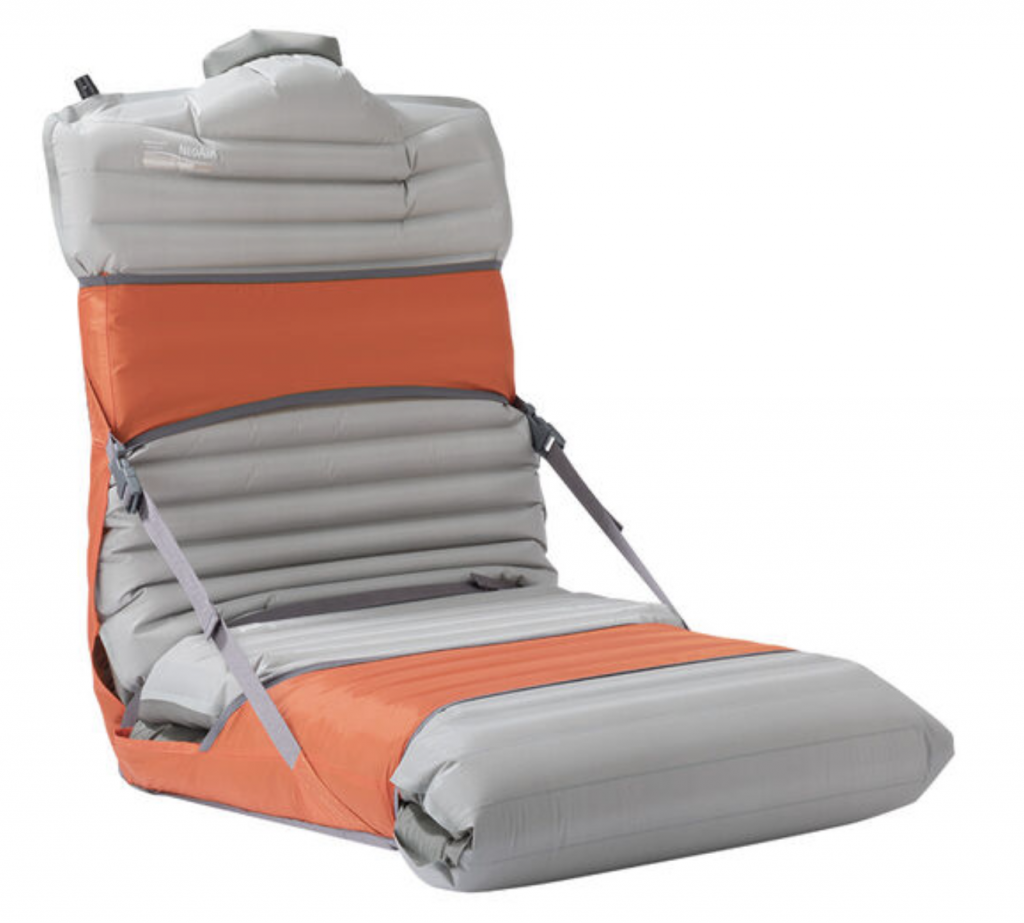
Air mattresses
Air mattresses are still mostly suited for car camping, but it’s not unreasonable to bring them on your backpacking trip. They are also great for sleeping in your truck or car.
Cots
Cots are only suitable for car/RV camping due to their size and weight, with the exception of a few ultra-light ones. Check out this story if you are still interested in bringing a cot with you for backpacking. An upside is that you can also use your cot as a bench on your campsite.
Ready for Your Next Adventure?
There you have it. Camping cots vs. air mattresses vs. sleeping pads. Hopefully, you know now which one you should get for your next adventure. As you saw, the answer is far from black-and-white. Weather conditions, personal preferences, and practical limitations should all weigh in your decision-making.
As you get ready for your next camping trip, check out this camping checklist to make sure you don’t forget any essentials.
And happy camping! I wish you wake up rejuvenated, refreshed, and ready for a day filled with wild adventures 🙂














